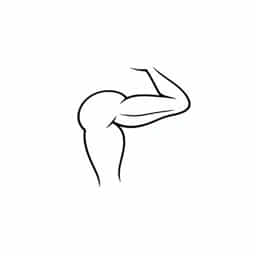External Rotation Of Shoulder
External rotation of the shoulder is a vital movement that allows the upper arm to rotate away from the body. This action plays a major role in many everyday activities such as brushing your hair, throwing a ball, or reaching behind your head. Understanding the muscles, joints, and mechanics involved in this motion is essential for athletes, physical therapists, and individuals recovering from shoulder injuries. Proper external rotation is key for shoulder stability, mobility, and functional performance, especially in overhead and rotational tasks. This topic explores the anatomy, function, and clinical significance of shoulder external rotation in detail.
Understanding Shoulder External Rotation
Definition and Movement Description
External rotation of the shoulder refers to the movement in which the humerus (upper arm bone) rotates laterally or away from the midline of the body. This motion primarily occurs at the glenohumeral joint, which is the ball-and-socket joint between the head of the humerus and the glenoid cavity of the scapula (shoulder blade).
For example, when your elbow is flexed at 90 degrees and held close to your torso, rotating your forearm outward is considered external rotation. This movement is essential in sports like tennis, baseball, and swimming, and in daily tasks that involve reaching outward or behind the back.
Anatomy Involved in External Rotation
Muscles Responsible for External Rotation
Several muscles are involved in producing shoulder external rotation. These include:
- Infraspinatus: A rotator cuff muscle located on the back of the scapula; a primary external rotator of the shoulder.
- Teres Minor: Another rotator cuff muscle that assists in external rotation and stabilizing the humeral head in the glenoid fossa.
- Posterior Deltoid: Although not a rotator cuff muscle, it contributes to external rotation, especially during resisted movements or abduction.
Joint and Ligament Structures
The glenohumeral joint, supported by the rotator cuff and ligaments like the coracohumeral and glenohumeral ligaments, allows for a wide range of motion, including external rotation. The joint’s capsule and surrounding bursae also play supportive roles in smooth movement.
Functional Importance of External Shoulder Rotation
Everyday Activities and Sports
External rotation is necessary for a wide range of actions:
- Reaching to zip a dress or scratch the upper back
- Throwing a ball or swinging a racket
- Putting on a jacket or lifting overhead
- Proper posture maintenance and upper body alignment
Postural and Muscular Balance
Proper shoulder external rotation prevents internal rotation dominance, a common issue caused by overuse of chest and anterior shoulder muscles. A balanced shoulder muscle system reduces the risk of impingement syndromes, tendonitis, and muscular fatigue.
External Rotation Range of Motion
Normal Range
The average external rotation range for a healthy adult shoulder is about 90 degrees when measured with the elbow at 90 degrees and the arm at the side or abducted to 90 degrees. This range may vary slightly depending on flexibility, strength, and anatomical differences.
Factors Affecting Range of Motion
- Shoulder injuries (e.g., rotator cuff tears, dislocations)
- Muscle tightness or imbalance
- Post-surgical limitations
- Neurological conditions affecting motor control
Strengthening and Rehabilitation
Importance of Strengthening External Rotators
Weak external rotators often lead to shoulder instability and dysfunction. Strengthening these muscles enhances shoulder performance and reduces injury risk.
Common Strengthening Exercises
- Resistance Band External Rotation: Standing with the elbow at 90 degrees, the forearm rotates outward against resistance.
- Side-Lying External Rotation: Lying on one side with a dumbbell, rotate the upper arm away from the body.
- Face Pulls: Target the rear deltoid and external rotators using cable machines or resistance bands.
Rehabilitation Protocols
For patients recovering from shoulder injuries or surgeries, external rotation is often one of the primary movements addressed in therapy. Controlled exercises focusing on external rotators are gradually introduced as healing progresses, often under the supervision of a physical therapist.
Common Conditions Affecting External Rotation
Rotator Cuff Injuries
Injuries to the infraspinatus or teres minor can limit external rotation and cause pain. These may result from trauma, repetitive motion, or degenerative changes with aging.
Frozen Shoulder (Adhesive Capsulitis)
This condition is characterized by stiffness and limited range of motion, particularly external rotation. Patients may find it difficult to reach behind them or perform tasks requiring arm rotation.
Shoulder Impingement
When the rotator cuff tendons are pinched between bones, external rotation can become painful and restricted. Strengthening the external rotators often helps prevent impingement.
Assessment and Testing
External Rotation Strength Tests
Clinicians assess shoulder external rotation using manual resistance or tools like handheld dynamometers. Weakness or pain during testing can help diagnose rotator cuff dysfunction or nerve impingement.
Range of Motion Evaluation
Using a goniometer or inclinometer, therapists measure the degree of external rotation in both active and passive movements to evaluate shoulder flexibility and joint integrity.
Tips for Maintaining Healthy External Rotation
- Incorporate rotator cuff exercises in regular workouts
- Stretch chest and internal rotators to avoid imbalance
- Use proper form during lifting and athletic activities
- Warm up before engaging in sports or overhead movements
External rotation of the shoulder is a fundamental movement that supports functional mobility, stability, and performance. It involves a coordinated effort between the infraspinatus, teres minor, and posterior deltoid muscles, working through the complex glenohumeral joint. From lifting to reaching and throwing, this motion plays a central role in daily life and athletic endeavors. Maintaining strength, flexibility, and balance in the shoulder’s external rotators is key to preventing injury and enhancing upper body function. Understanding and training external rotation is not only essential for rehabilitation but also for long-term musculoskeletal health.
